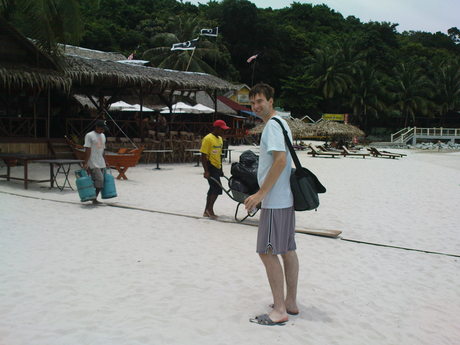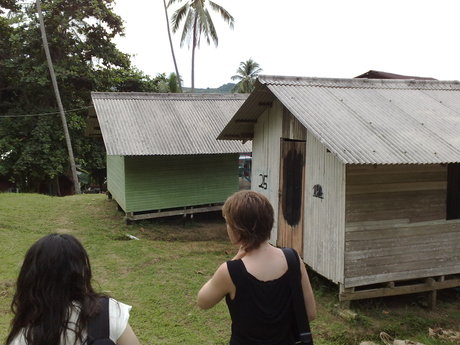Living in a Hut on the Beach
"Heaven, heaven is a place,
A place where nothing, nothing ever happens"
-- Talking Heads, Heaven

If you're a backpacker, this is probably the best time in history to live out your dream of living in a tropical paradise somewhere. You can get a spacious hut right near a quiet tropical beach for $5 or $10 a night, no reservations required. There's still lots of areas in Thailand and Malaysia that haven't been overdeveloped into the sprawl and sleaze of Phuket or Pattaya, but still have tourist infrastructure. With luck, growing environmental awareness will keep growth in check during the next few decades; Ko Chang wouldn't have been the same without watching wild monkeys across the road dividing the jungle from the beach developments, or the Perhentians without the huge lizards roaming around looking for food scraps.
For short stays, these are truly places to get away from it all, relax, and maybe learn SCUBA diving or volunteer at a wildlife rescue. If you're telecommuting while backpacking, these can be great places to set up shop for a month. All but the most remote areas will have Internet access via the mobile phone network, and many foreigner-oriented restaurants and hostels will have Wi-Fi. You can work from a hammock, before walking a few steps to eat some cheap local food and watch the sunset.

But the experience is a lot better when you have the right expectations. $5 a night won't get you air conditioning, or a TV. In some places that get electricity from diesel generators you'll only have power after nightfall. But that's the point; anything else would take away from the experience. Some people stay at $1,000-a-night hotels to get that same level of isolation, and then they have to worry about the bill.
(In fact, I wonder if we couldn't have $5- or $10-a night places in the US similar to this, were it not for all those nagging regulations on hotels).
Personally, I've been to the Perhentian Islands in Malaysia, and Ko Chang in Thailand. I know of people who went to Langkawi and didn't leave for six months. Each place has its own strengths and weaknesses, which I hope to cover in separate destination reviews. I also don't want to leave out a lot of other destinations that aren't anywhere near a beach, but can offer the same sort of experience.
As always, though, I can't leave you thinking that it's all sunshine and flowers. While malaria is increasingly uncommon in Malaysia and Thailand -- you can determine risk using the Malaria Atlas Project and the CDC Malaria Map -- there's a much bigger risk in the ubiquitous (and also mosquito-borne) dengue fever. I should know, since I picked up a case while living in a hut on the beach in Ko Chang, Thailand. There is no vaccine, and it's often more dangerous, even deadly, the second time that you have it. Avoiding every mosquito out there often isn't an option. So it's important to always have an exit plan, should you become ill. Since I've had dengue, I'm nervous about returning to endemic areas.
And then, of course, there's the risk that you'll stay too long, and the beautiful things you see every day will become mundane. But that's a risk that I'm willing to take.